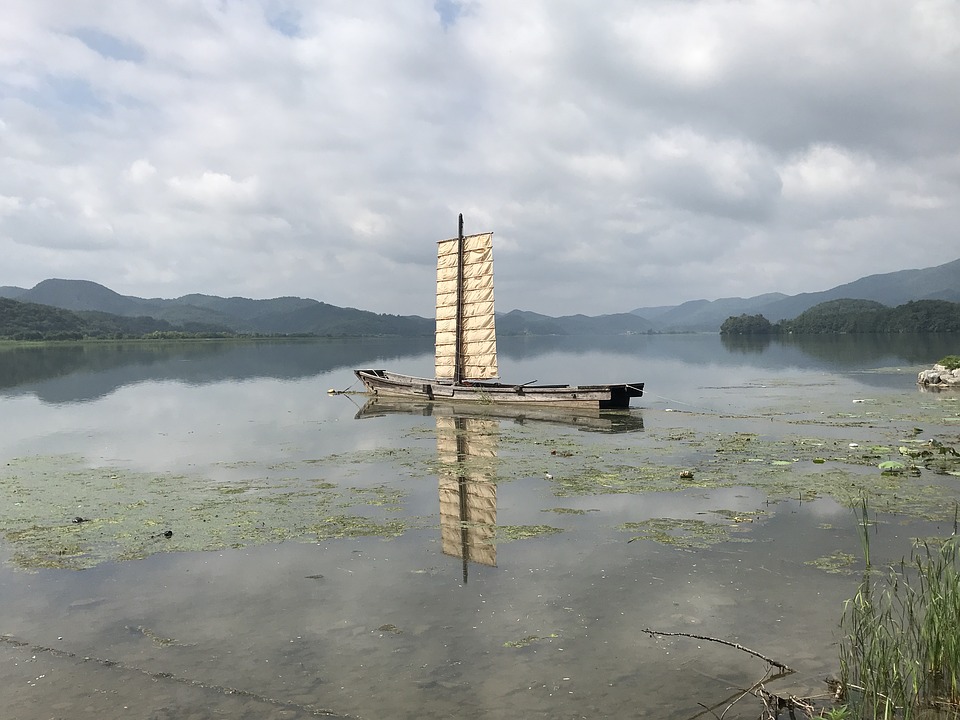The Ferryboat and the Traveler 나룻배와 행인
Written by Han Yong-un 한용운 (1926)
Translated by David E. Shaffer
I am a ferryboat,
And you a traveler.
With soiled foot, on me you tread.
Embracing you, the water I cross.
While embracing you, whether deep or shallow, or swift the current, I cross.
Even though you may not come, exposed to the winds and pelted by rain or snow, through the night and through the day, I wait for you.
Once the water is crossed, without so much as a glance back at me, you continue on your way.
Yet I am sure that one day you shall return.
Day after day while waiting for you, old and worn I grow.
I am a ferryboat,
And you a traveler.
나는 나룻배
당신은 행인
당신은 흙발로 나를 짓밟습니다.
나는 당신을 안고 물을 건너갑니다.
나는 당신을 안으면 깊으나 옅으나 급한 여울이나 건너갑니다.
만일 당신이 아니 오시면 나는 바람을 쐬고 눈비를 맞으며 밤에서 낮까지 당신을 기다립니다.
당신은 물만 건너면 나를 돌아 보지도 않고 가십니다 그려.
그러나 당신이 언제든지 오실 줄만은 알아요.
나는 당신을 기다리면서 날마다 날마다 낡아 갑니다.
나는 나룻배
당신은 행인
(1926)
The Poem and the Poet
For a man who lived such a turbulent life, one can only marvel at how Han Yong-un could have written such serene and subdued poetry as “The Ferryboat and the Traveler.” Han Yong-un (1879–1944) received a Buddhist education and entered the priesthood at an early age, taking the Buddhist name “Manhae,” which he is also widely known by.
Poetry was not much a part of Manhae’s early years. Around the turn of the century, he participated in the Tonghak Peasant Rebellion. With Japanese annexation of Korea in 1910, he fled to Manchuria, and later Siberia, where he participated in Korean independence activities before his return three years later.
In 1919, Manhae became one of the thirty-three framers of Korea’s Declaration of Independence. For this, Manhae was imprisoned by the Japanese for three years. After his release from prison, for a time he devoted himself largely to the writing of Buddhist works, novels, and poetry. “The Ferryboat and the Traveler” appeared in Manhae’s much-read 1926 collection of poetry The Silence of My Love
(님의 침묵).
In this lovely poem, the poetic “I” and “you” are represented by the ferryboat and the traveler, respectively. Expressed is the essence of true love, revealing itself through sacrifice and forbearance for one’s love. No matter how difficult the circumstances, the ferryboat dependably and faithfully carries out its duty. Even when stepped on or when the crossing becomes exacting, the ferryboat is pleased to be of service (“While embracing you …”), much like the compassion of the dutiful woman to her man in traditional Korea.
Without appreciation or recognition for the ferryboat’s efforts, the traveler goes on, but as is the case with true love, the ferryboat waits, confident of the traveler’s return.
Waiting, as the connecting thread between parting and reunion, is the common interpretation of this poem. However, considering Manhae’s past, it can also be taken to express the desire to be a “ferryman” for his countrymen and his fellowman. Manhae’s poetry is religiously as well as artistically inspired. His Buddhist beliefs are evident. The forbearance of the ferryboat typifies the patient waiting of every Bodhisattva, postponing Nirvana to help others attain enlightenment. The message so beautifully expressed in “The Ferryboat and the Traveler” is timeless: Human love may be transformed into the divine love of compassion.
The Author
Dr. David E. Shaffer is a long-time resident of Gwangju who was for many years a professor at Chosun University. He is now the board chair of the Gwangju International Center and editor-in-chief of the Gwangju News. He has written extensively on English teaching and learning, and has published books on Korean language, poetry, and traditional culture. Dr. Shaffer was also the 1994 top prize winner of The Korea Times’ Modern Korean Literature Translation Awards in the poetry division.




